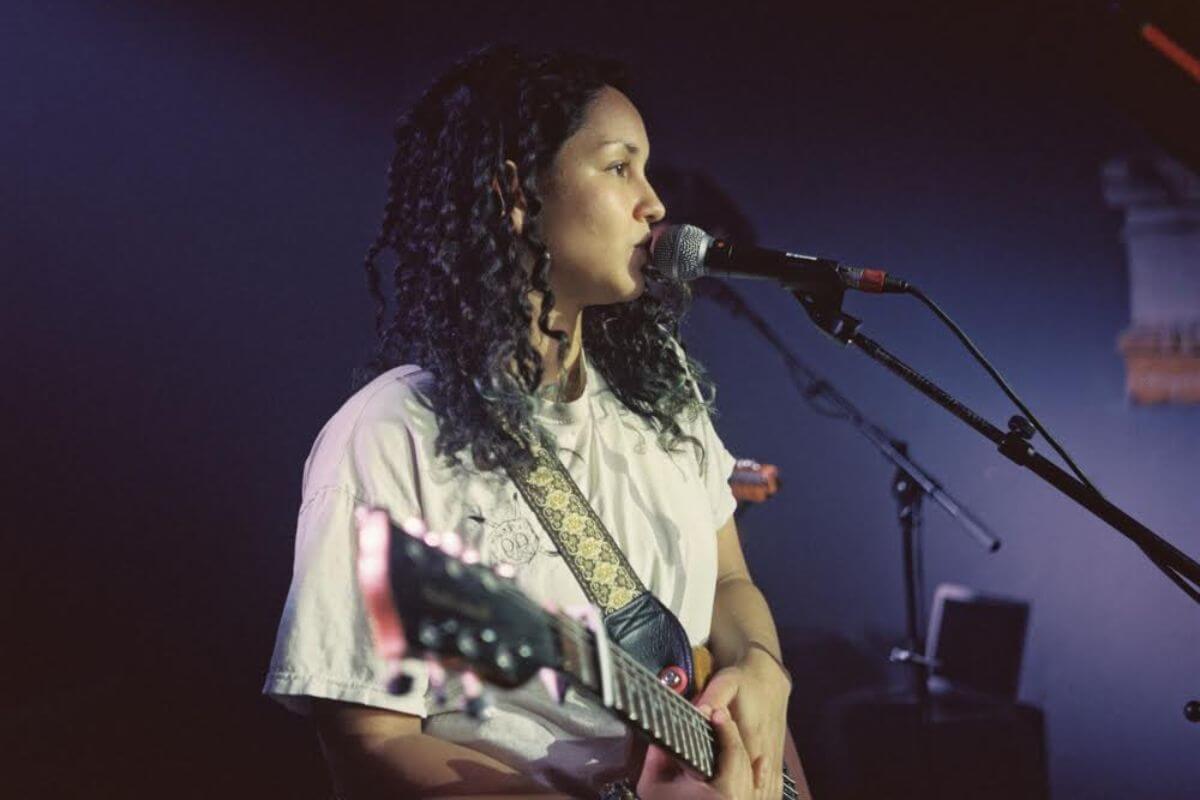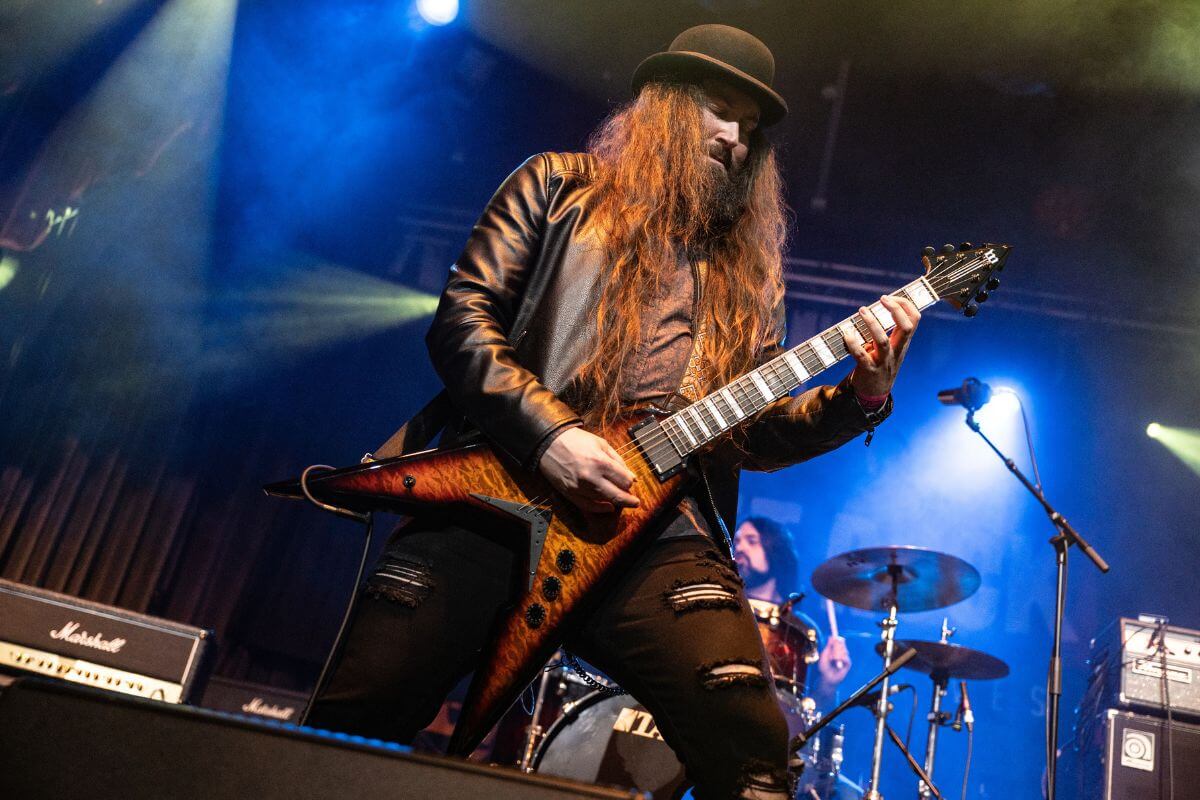The song ends. The applause ebbs away. And it’s at that moment, stood at the microphone, that you’re painfully aware of a silence that begs you to fill it. It’s strange but true that for many singers, the musical demands of a live performance – remembering lyrics, hitting notes and so forth – hold no fear, while the prospect of talking to an audience is the stuff of cold sweats.
Does patter even matter? As anyone who has ever watched, for example, the Pixies would have to acknowledge, taciturn bands can find worldwide success while virtually mute singers can still have stage presence. Perhaps silence was acceptable in the pre-millennium industry. But at a time when fans expect closer interaction than ever with their favourite artists, the rising blues-rock guitarist and songwriter Jack J Hutchinson says musicians give themselves a far better chance of success by removing barriers. “Engaging the crowd is key to every performance. I speak to a lot of musicians who see in-between song chatter as being separate from the act of performing music – it isn't. If you don't connect with the audience, you’re setting yourself up to fail.”
Pick your moments
If you have no interest in talking to the crowd, you probably shouldn’t: it will only come across as forced and fake. But if your silence is down to nerves or uncertainty, the acclaimed singer-songwriter Eliza Shaddad suggests you start by drafting a loose framework of chat that promotes your activities. “Some preparation can be really useful, so you know what you want to get across. Often, ahead of time, I’ll go through the setlist and plan out the moments where I’m going to speak. Let’s say there are two or three things I ought to mention, like that we have a new album or we’re touring again soon. I might introduce the band later in the set, maybe after a particularly rocking song.”
 Acclaimed singer-songwriter Eliza Shaddad suggests that artists start by drafting a loose framework of chat that promotes your activities. © Flore Diamant
Acclaimed singer-songwriter Eliza Shaddad suggests that artists start by drafting a loose framework of chat that promotes your activities. © Flore Diamant
Reminding the crowd of your band’s name and gently directing them to your merch stand each night will boost both your profile and live profits, but don’t turn what should be a relaxed aside into a hard sell. Bear in mind, too, that devoted fans will watch multiple gigs and they’ll be turned off if they sense you’re robotically trotting out the same soundbites. “It’s hard not to fall into saying the same thing every night,” agrees Shaddad. “But it doesn’t feel as good if you’re just repeating stock info all the time. If something works really well one night, I might repeat it once – but I usually realise that it hasn’t connected with me or the audience the same way.”
Show your personality
Just as honest material goes down best, so audiences want to see your true personality, says Kelly Erez, a singer-songwriter, life coach and vocal coach featured on BBC1’s I Can See Your Voice, who has also helped countless musicians sharpen their craft and express themselves as a vocal coach and singing therapist. “I used to feel so awkward between songs. Once, I was preparing for a big showcase gig and wondering what to do with myself when I wasn’t singing – I thought everything had to be pristine for it to be professional. But actually, on the night, something happened that changed everything. I was wearing high heel boots that weren’t very comfortable, so after the first few songs, I just took them off and joked to the crowd, ‘I’m not great in heels!’ When the reviews came in, some were saying it was one of the highlights because it was so personable. At that moment, I decided I was just going to be myself and my shows got so much better.”
“I was wearing high heel boots that weren’t very comfortable, so after the first few songs, I just took them off and joked to the crowd, ‘I’m not great in heels!’ When the reviews came in, some were saying it was one of the highlights because it was so personable.” - Kelly Erez
Tell the story behind the songs
If jokes and ad-libs aren’t your style, it’s always effective to tell the story behind the song you’re about to play. “I won’t explain all of them, because often you can take a song in many ways and that’s almost the beauty,” says Shaddad. “But with the most emotional songs – and one in particular about my grandmother – I want people to understand where they’re coming from. I remember seeing Joanna Newsom headline End Of The Road years ago. I’d not heard any of her material beforehand, but she was so magnetic that I was just brought into the world of every song.”
 Engaging the crowd is key to every performance,” says blues rocker, Jack J Hutchinson, who believes fans now expect closer interaction than ever with their favourite artists. © Morag Farley
Engaging the crowd is key to every performance,” says blues rocker, Jack J Hutchinson, who believes fans now expect closer interaction than ever with their favourite artists. © Morag Farley
Hutchinson has a reputation as one of the UK’s wittiest and most sanguine performers, but he’s found that sharing the occasionally painful personal memories behind his songs has strengthened his bond with fans. “There’s a song in my set called I Will Follow You, which was written about my father when he was battling Alzheimer's and dementia. I always take a moment to explain the song and contextualise it. Lots of people have said that it really resonates with them because of that.”
Create a two-way conversation
 By extension, stage patter needn’t be a one-way street. When a crowd feels friendly, try putting out your thoughts and engaging with what comes back. “Last year, as a bit of an experiment, I started to interact with audiences in different ways,” says Erez. “I sometimes ask them if they want to do some vocal warm-ups with me or I’ll tell them what a song’s about and share ideas on how to overcome a situation that’s expressed in the lyrics. For example, I have a song called Sometimes that’s about a relationship coming to a planned ending, yet in those final moments together, saying goodbye ‘is the hardest thing to say right’. So before that song, I’ll ask, ‘Has anyone ever been in a relationship where you knew it wasn’t quite right…?’”
By extension, stage patter needn’t be a one-way street. When a crowd feels friendly, try putting out your thoughts and engaging with what comes back. “Last year, as a bit of an experiment, I started to interact with audiences in different ways,” says Erez. “I sometimes ask them if they want to do some vocal warm-ups with me or I’ll tell them what a song’s about and share ideas on how to overcome a situation that’s expressed in the lyrics. For example, I have a song called Sometimes that’s about a relationship coming to a planned ending, yet in those final moments together, saying goodbye ‘is the hardest thing to say right’. So before that song, I’ll ask, ‘Has anyone ever been in a relationship where you knew it wasn’t quite right…?’”
Photo caption: "I used to feel so awkward between songs,” says Kelly Erez, who believes audiences want to see an artist’s true personality. Photo credit - © Steve Taylor
Audience participation: why it matters
Encouraging crowds to clap along is a no-brainer, but you can go further by teaching them a musical part, says Shaddad. “Audience participation can sometimes come off a little cheesy and there’s a fine line, but if it’s the right vibe then it goes down really well and everyone feels included. Something I’m working on is finding a natural way to have more back-and-forth. There’s one song on my latest album called Blossom, where there’s a traditional celebratory Sudanese call. Recently, I’ve been asking the audience to do that. It's something a bit unexpected that gets everyone out of their shells.”
Like everything else as a live musician, the more you talk to your audience, the easier it will become. But if your patter starts to overshadow the main event, it’s time to redress the balance. “Don't overdo it,” advises Hutchinson. “It’s important to chat with the crowd, but it’s a slippery slope into inane chatter. In my early career I often went off on tangents telling stories that went on for ages. Someone pointed out after a show that I probably could have done another three songs if I cut it down a bit. So I'm a bit more selective now!”